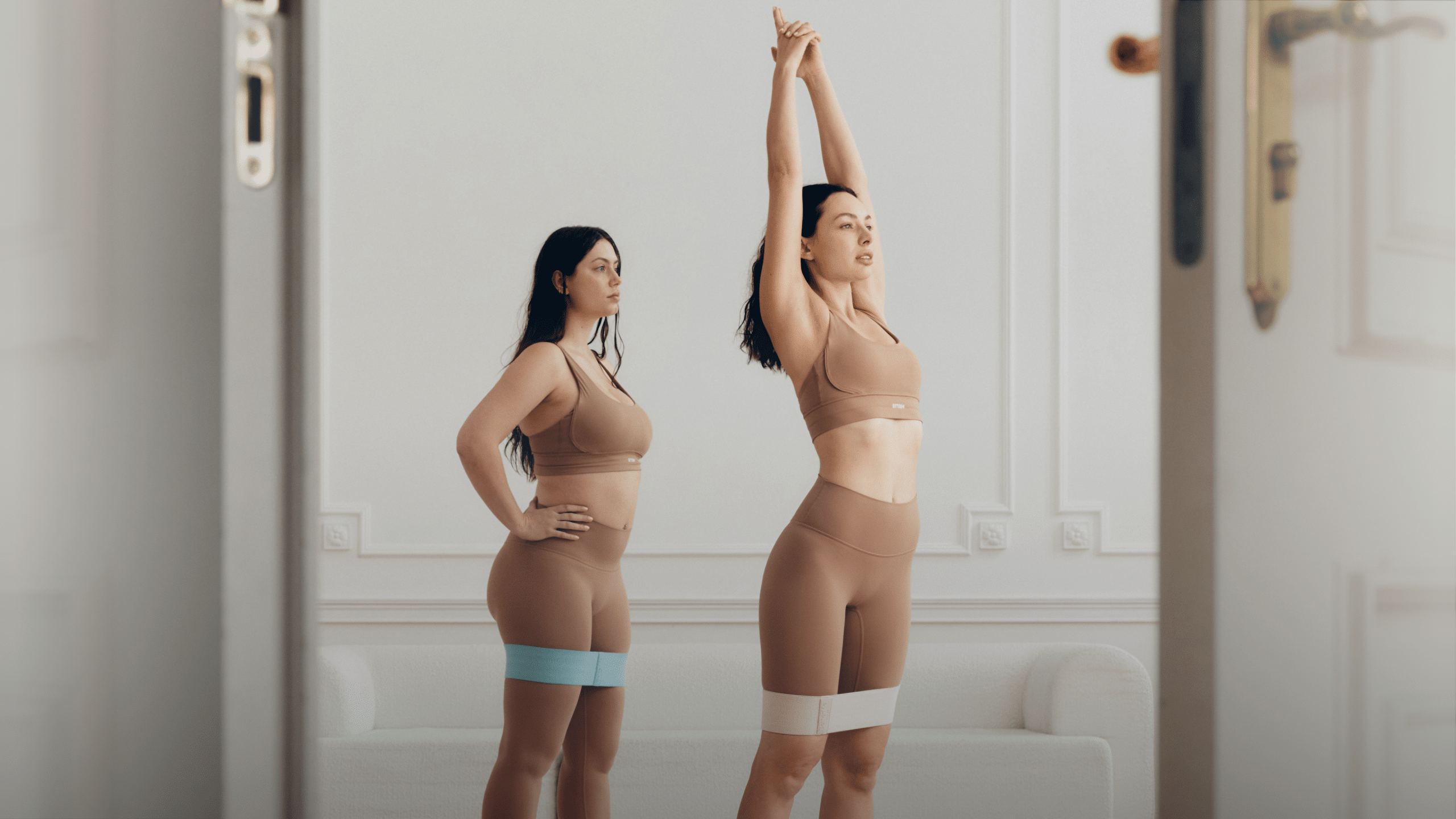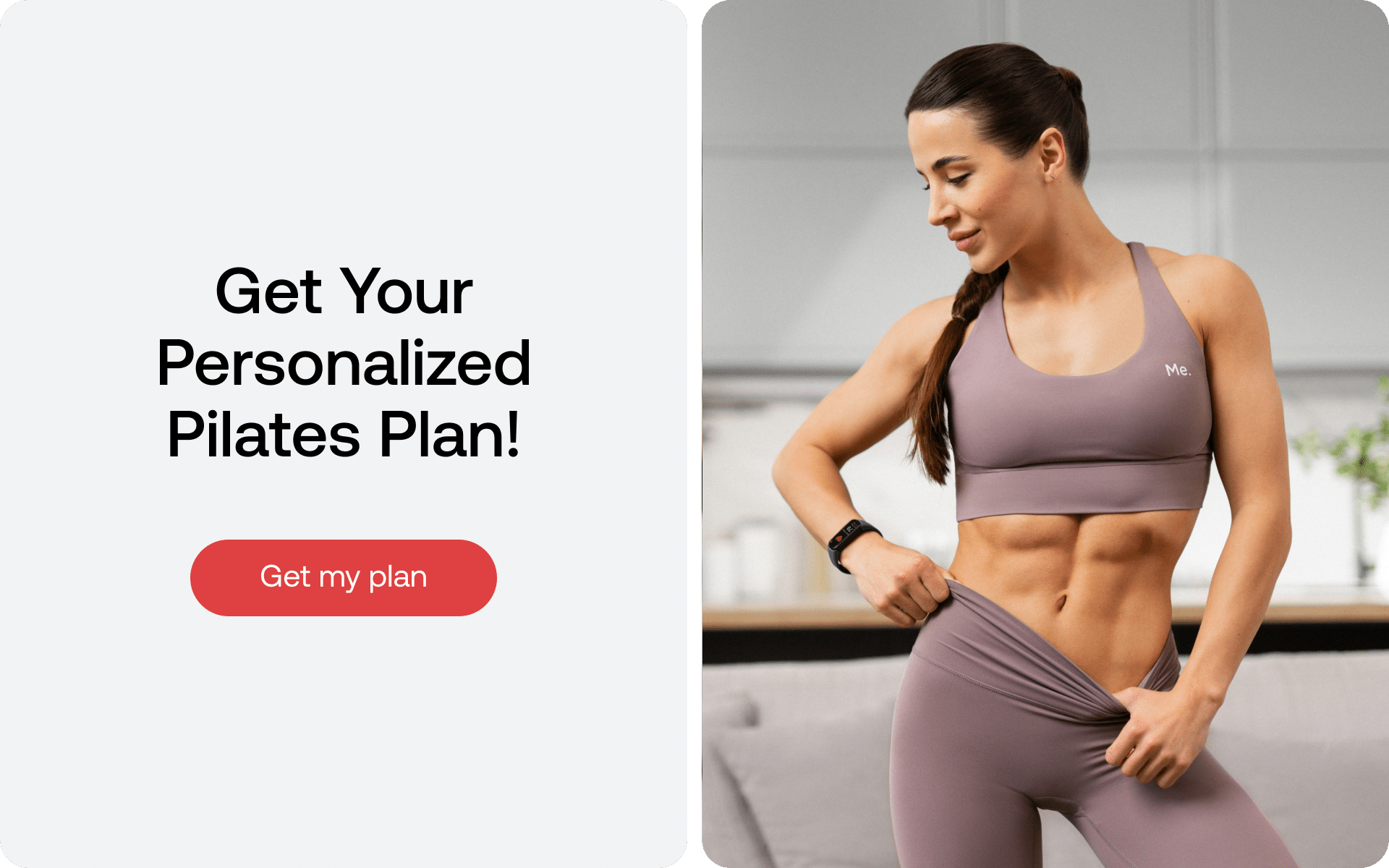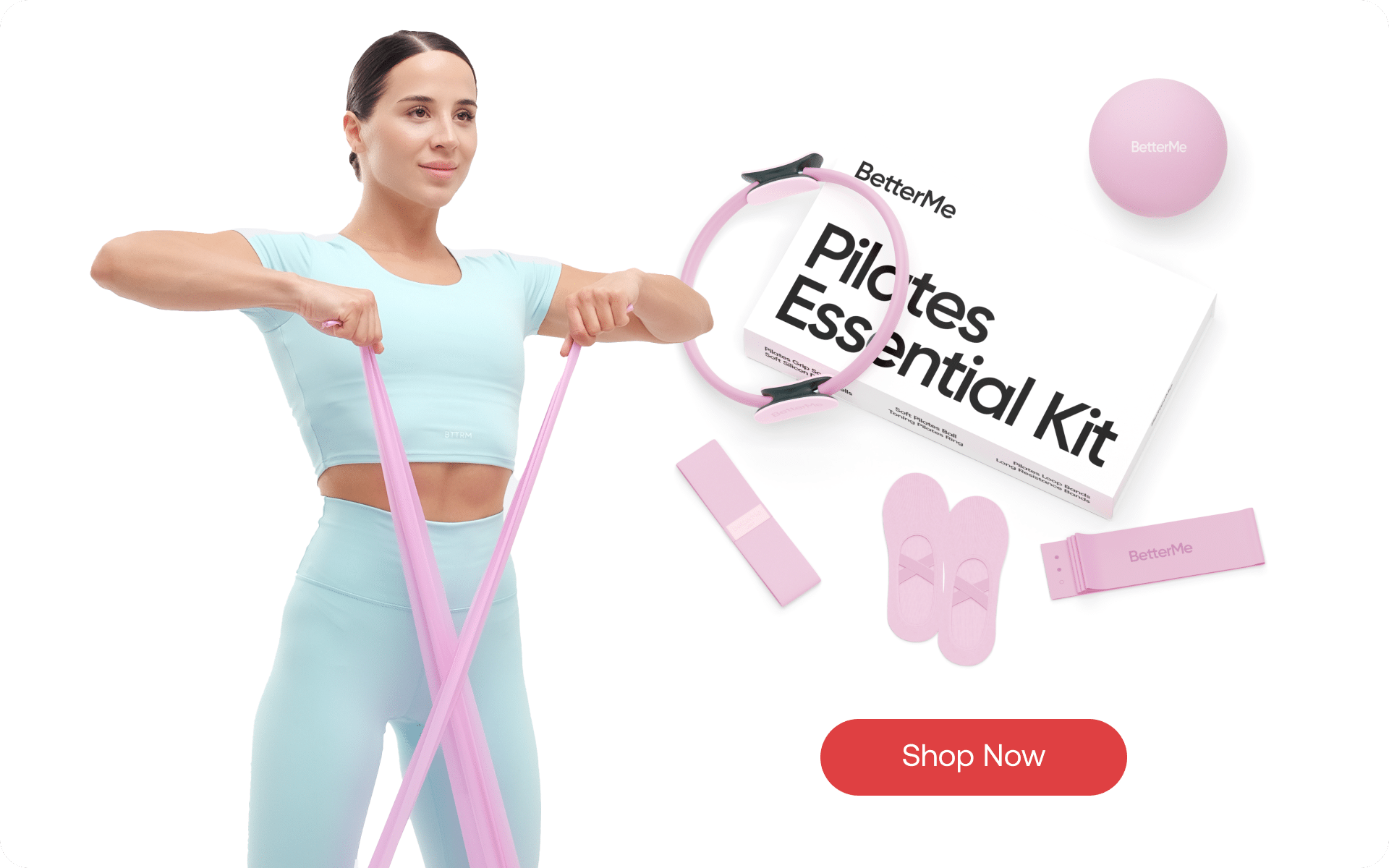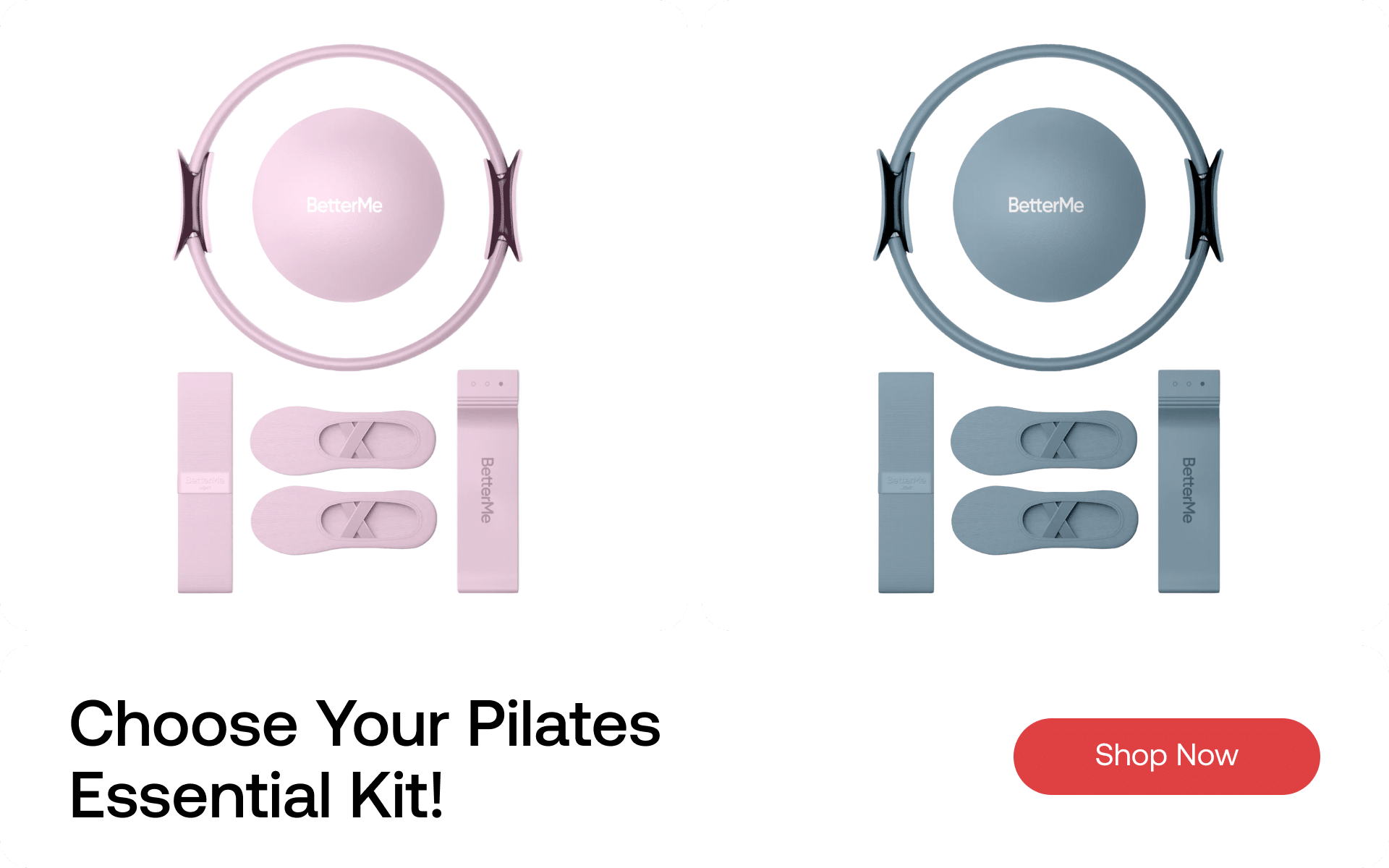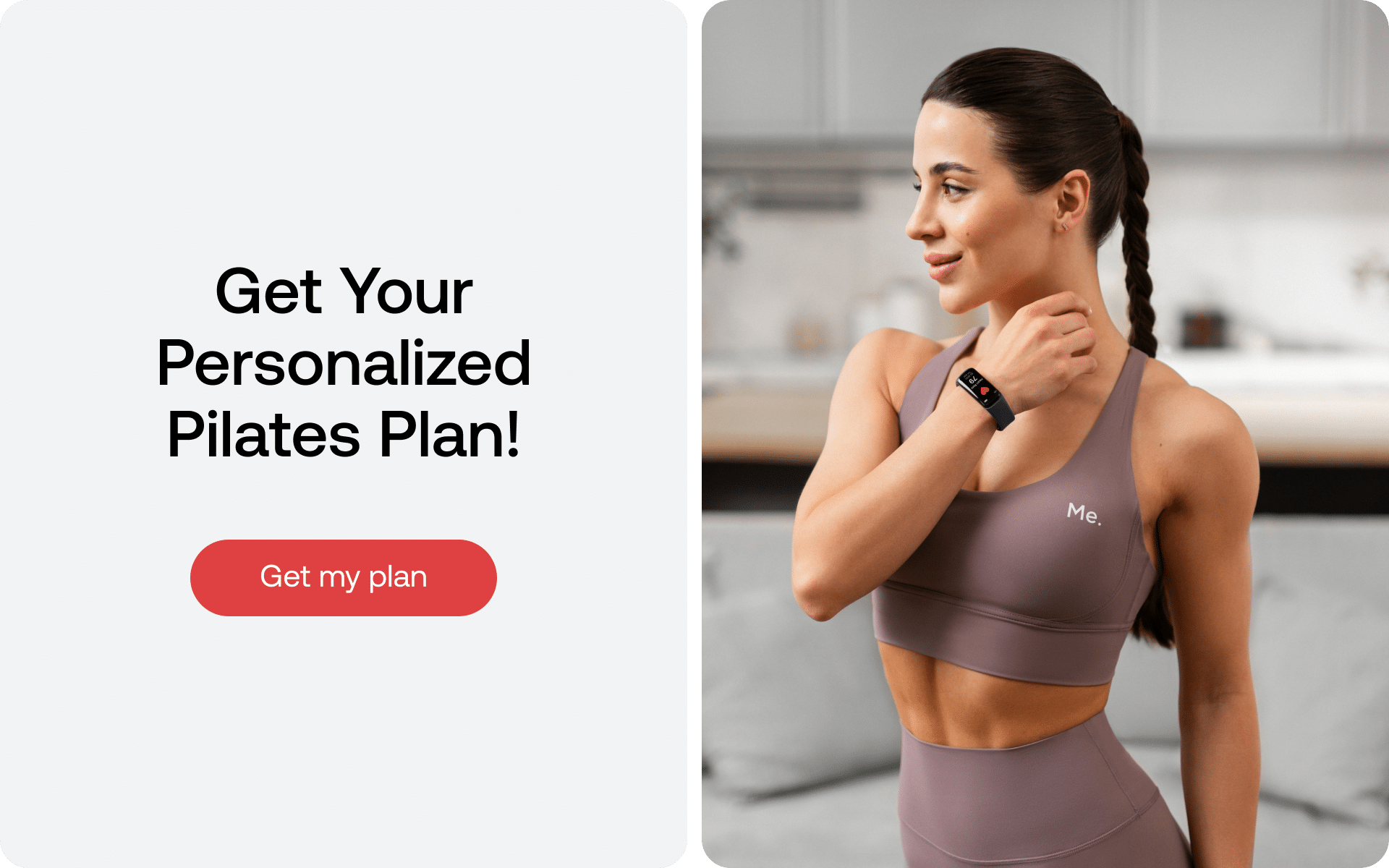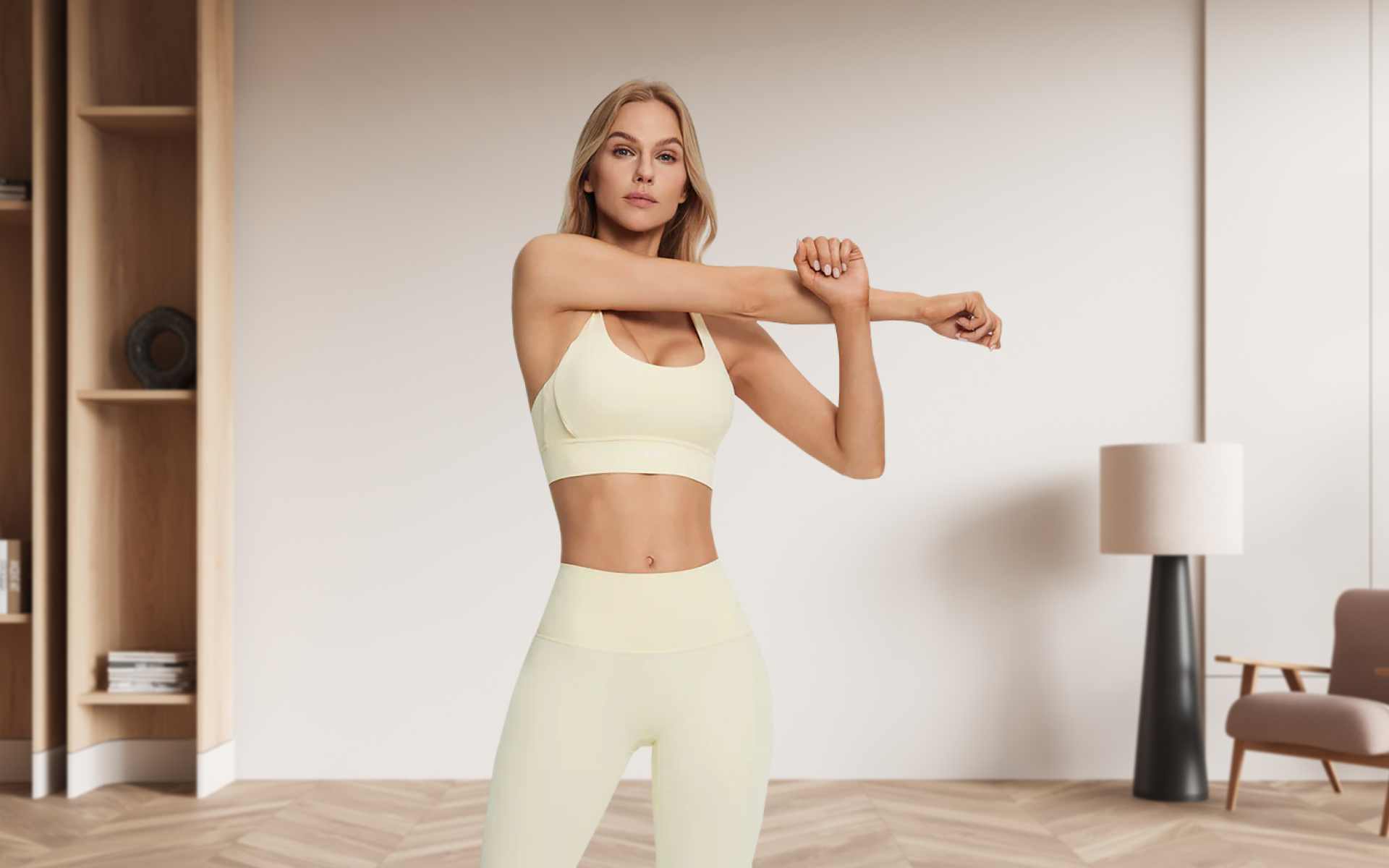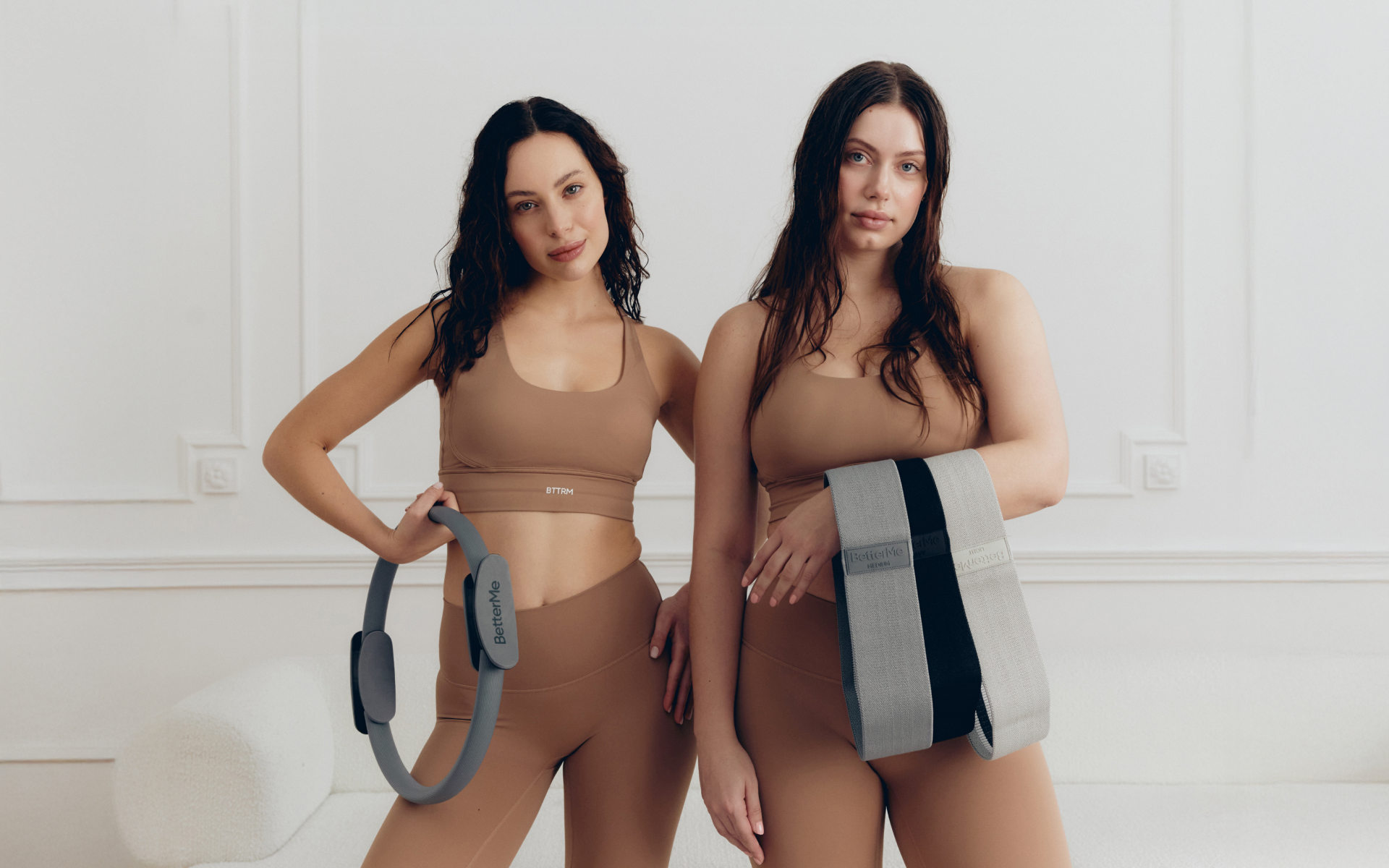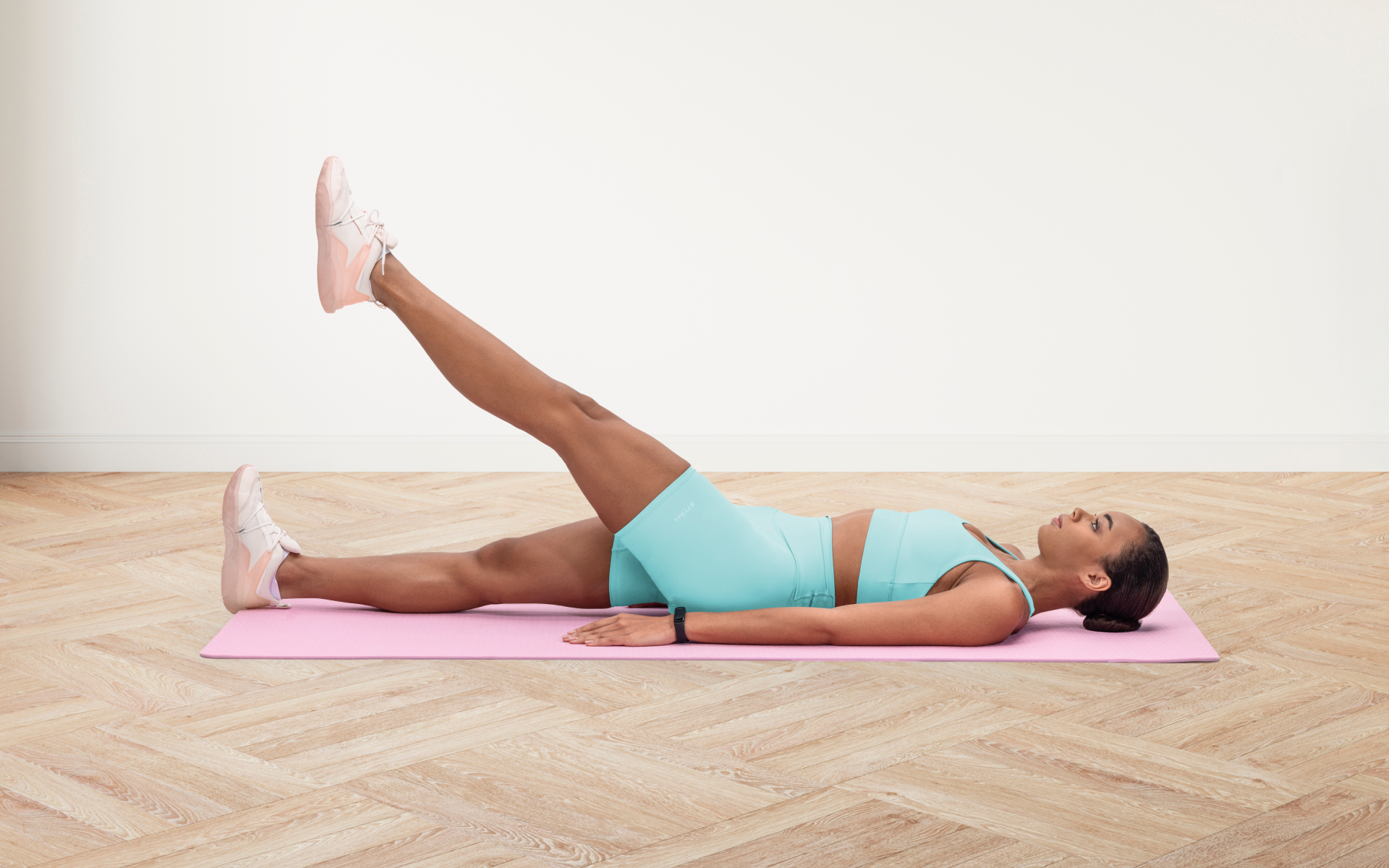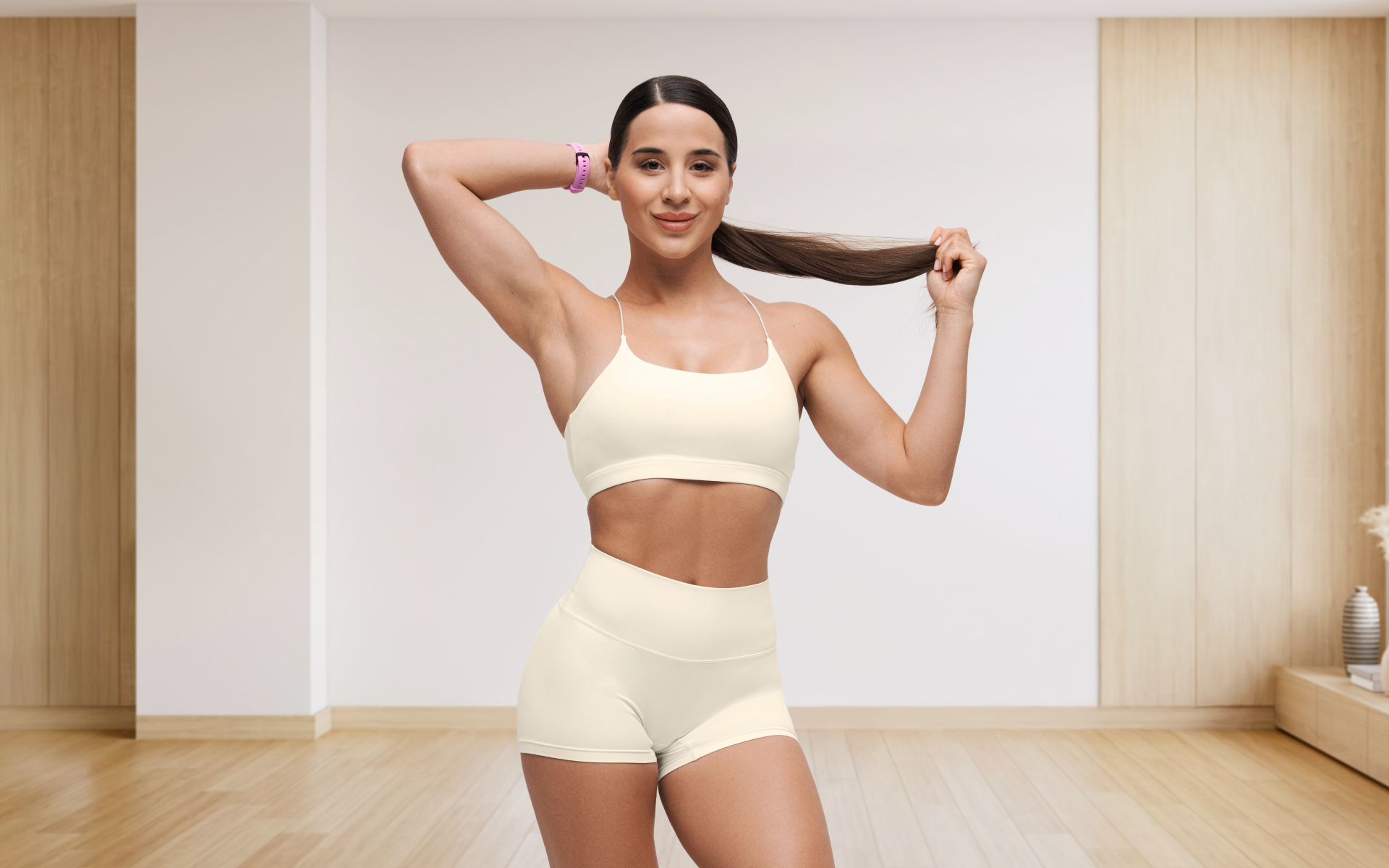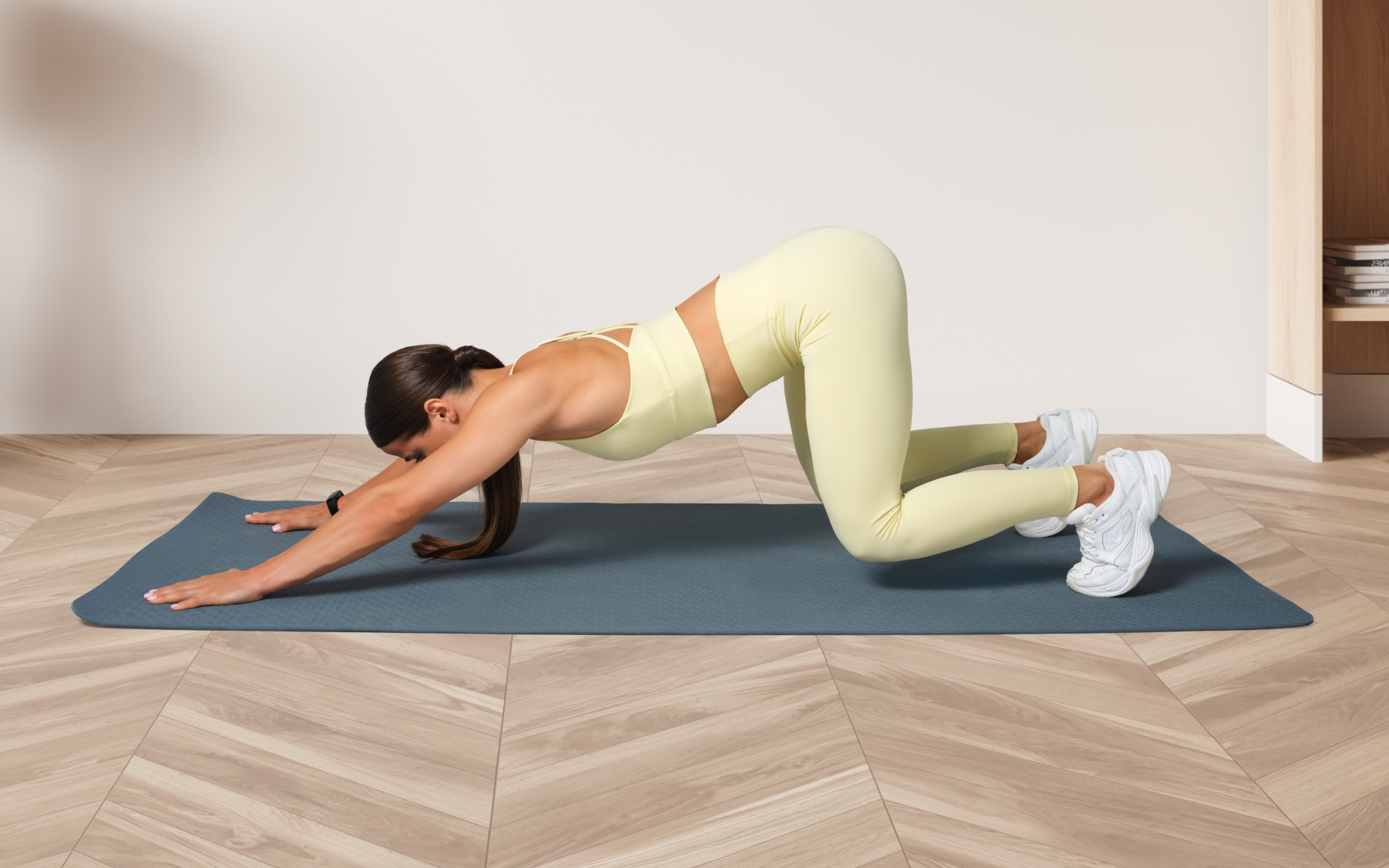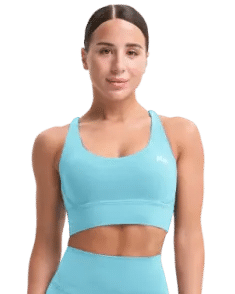Whether you’re a beginner, an instructor, or just someone who wants to equip their home gym for Pilates classes, you need the right equipment. In this article, we’ll discuss recommendations for how to do just that.
As we’ve explained in several posts, Pilates is a mind-body low-impact form of exercise that is practiced worldwide. It involves a combination of exercises that spur muscle exertion and help increase strength and flexibility.
Before I take you through what you need for Pilates at home, in the gym, or as an instructor, it’s important to understand that it’s an effective workout program with many health benefits.
Several studies have suggested that Pilates exercises are effective for managing chronic lower back pain, improving mental health, and enhancing flexibility, balance, and overall fitness, among other benefits, for adults and the elderly (2).
What Equipment Do You Need for Pilates?
When participating in Pilates classes, the equipment you require can vary based on the specific type of Pilates and your fitness goals. To address the question, it’s essential to first familiarize ourselves with the different Pilates variations. This understanding will guide your equipment choices effectively.
Types of Pilates
Let’s start by briefly discussing some types of Pilates. Once we have a better understanding of the key similarities and differences, we’ll discuss the equipment that is needed for each.
Mat Pilates
The name tells you the equipment that you need for this variation: the Pilates mat. This low-impact exercise is accessible to individuals of all ages and abilities, making it ideal for beginners. Mat Pilates focuses on the core muscles while also engaging the arms and legs.
Classical Pilates
Classical Pilates is based on the Joseph Pilates principles of centering, control, concentration, breath, flow, and precision. It combines mat work and apparatus such as Cadillac, Reformer, and Barrel. The aim is to strengthen the core muscles and promote proper alignment. It also enhances mental clarity, which makes it good for both physical and mental wellness.
Contemporary Pilates
Contemporary Pilates builds upon Joseph Pilates’ foundational principles and incorporates modern movements. It also includes breathing and relaxation techniques to help with stress relief.
In contemporary Pilates, a variety of equipment is used, including Pilates rings, resistance bands, foam rollers, and stability balls.
While classical Pilates adheres strictly to Joseph Pilates principles, contemporary Pilates includes modern variations that may provide additional benefits for injury rehabilitation.
Reformer Pilates
Reformer Pilates derives its name from the specialized machine – the reformer – that is used in this variation. The reformer provides resistance through springs and pulleys and features a platform where the exercises are performed.
Originally developed by Joseph Pilates during World War I, reformer Pilates has evolved from soldiers performing resistance exercises in their beds using attached strings. This has developed into the modern reformer machines that are currently used all over the world (3).
Reformer Pilates is excellent for strengthening your core, increasing flexibility, correcting muscle imbalances, and improving posture. If you experience neck or lower-back pain due to prolonged sitting, reformer Pilates can be an effective corrective practice.
Clinical Pilates
As the name implies, clinical Pilates is utilized mainly in a healthcare setting and focuses on rehabilitation from surgery or injury. This variation may not follow the original principles of Joseph Pilates as closely due to its very individualized nature.
The BetterMe Pilates Essential Kit is your pocket-sized personal trainer, ready to unleash a full-body transformation. Grip it, stretch it, balance it; each piece invites you to play your way to a toned physique. With comfort at your fingertips and style at your toes, who knew shaping up could feel so good?
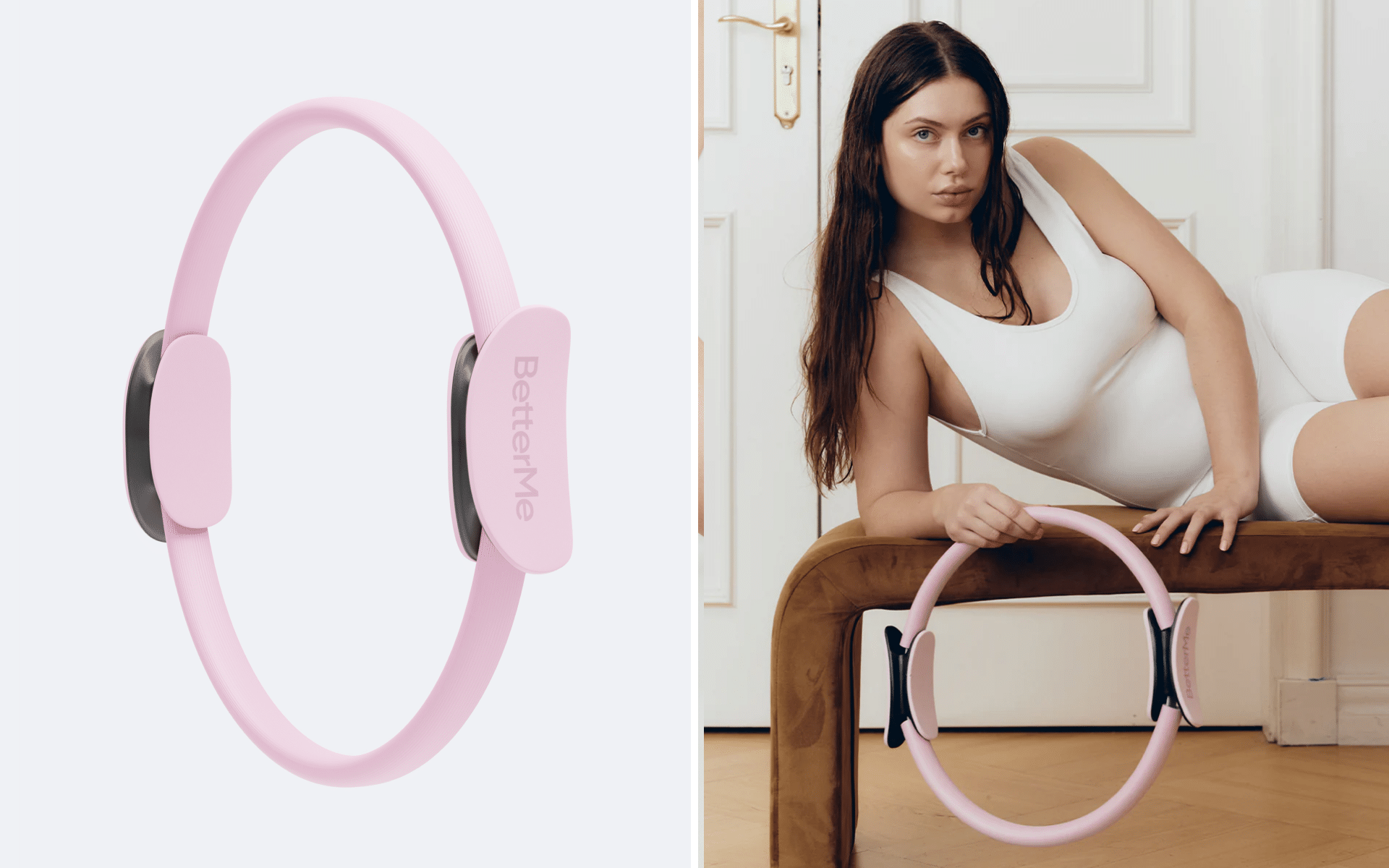
Pilates Equipment List
An important first step on your Pilates journey is to understand the equipment that is needed for Pilates at home, in the office, or at the gym. The following is some of the common equipment you should know about and consider acquiring for your Pilates practice.
Pilates Mat
Pilates exercises that require you to roll and use your back or stomach need a Pilates mat. These mats are thick, large, wide, and have smooth surfaces.
In addition to a Pilates mat, if you’re attending a mat Pilates class for the very first time, then it’s not enough to only have a mat. You also need to equip yourself with the following items:
- A towel
- Water bottle
- Headband
- Grippy socks
Check out the BetterMe Pilates Essential Kit to help you get started with Pilates.
Pilates Ring or Magic Circle
A Pilates ring, also known as a “magic circle”, is an important piece of equipment that’s made of flexible, padded rubber. There are usually two pads opposite each other on the ring that provide comfortable contact points.
The purpose of having a magic circle is to add additional resistance to your exercises. Before you purchase one to enhance your Pilates practice, you should consider the following:
- Whether or not you want it to have handles
- The size that is suitable for your body type
- Flexibility and the amount of resistance you need
- The weight of the ring (ensure it’s lightweight)
Foam Roller
Foam rollers have become a go-to for many, as they can be used to help with stretching, improve blood flow to specific areas, and reduce pain and trigger points (1).
When it comes to choosing a foam roller for your workouts, whether for home, office, or gym, you need to consider the following:
- There are different sizes and shapes to choose from
- Foam rollers come in different densities and feel different for different types of exercise or the results you desire
- The surface texture varies – while some are smooth, some are tough with ridges
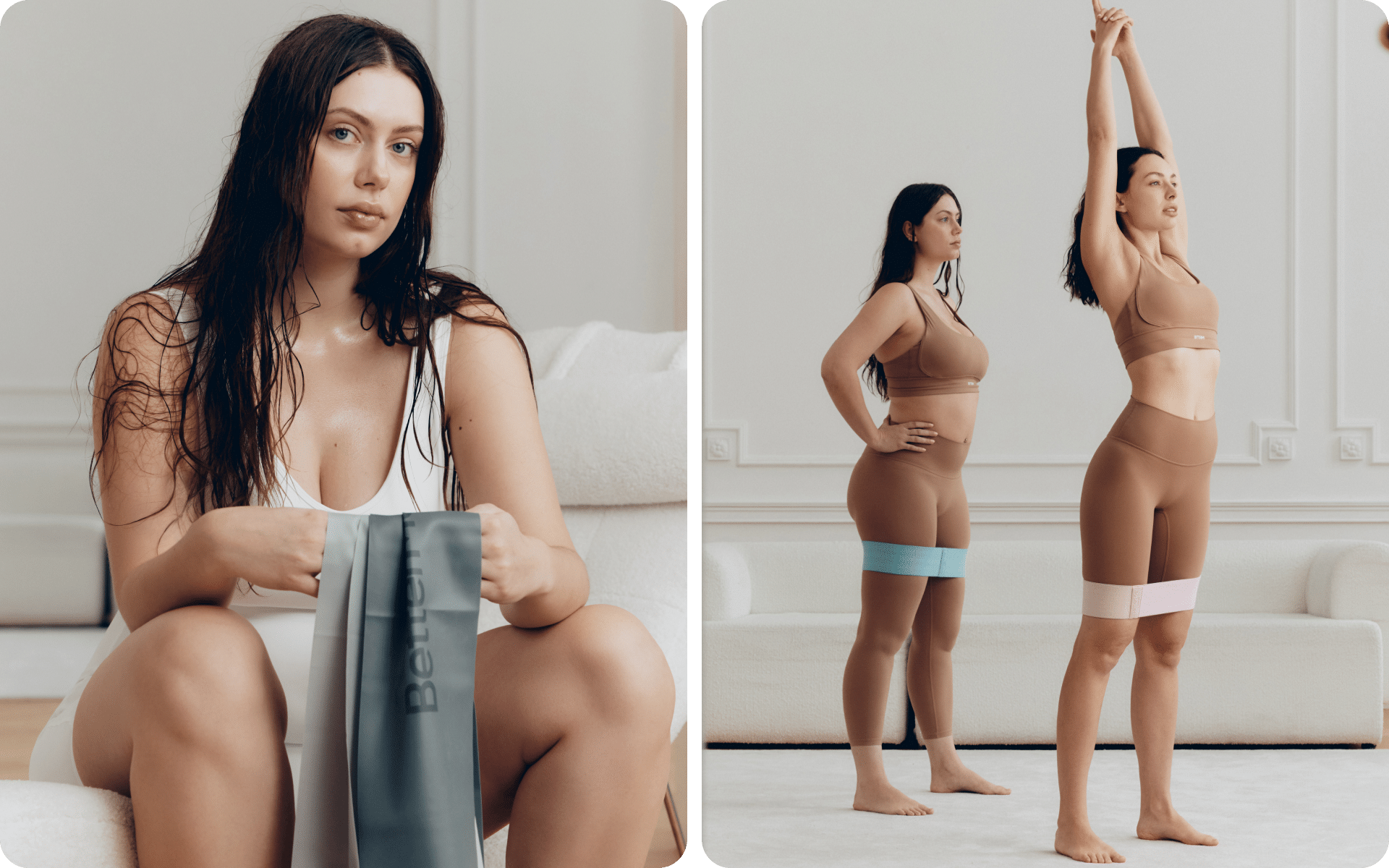
Resistance or Pilates Bands
These bands are useful for muscle activation and improving strength in Pilates exercises. When it comes to using them in your workout, you can target specific areas such as the shoulders, arms, or glutes. Some of the benefits of using resistance bands include:
- Helps improve flexibility and mobility
- Effective for building muscle and improving strength
- Available in different lengths, sizes, and resistance levels to suit different exercises
Read more: Wall Pilates for Butt: A Quick Guide for Beginners
Pilates Chair
The Pilates chair is among the original inventions of Joseph Pilates. This chair is compact with amazing features, including a padded seat, wooden box, split foot pedals, and height adjustable handles. This chair is also known as the Wunda Chair.
If you want to build strength with the help of a versatile piece of equipment, this is a great addition. However, purchasing one for use at home is likely unrealistic for many, as these chairs typically come with a hefty price tag.
Pilates Reformer Machine
We can’t talk about Pilates without mentioning the Pilates reformer machine. This is also among the original equipment that was invented during the First World War by Joseph Pilates. Luckily, today’s reformers are significantly more robust and elaborate than the original ones.
The reformer is a staple for many Pilates lovers and offers versatile options for adding and adjusting resistance and support for many exercises. Some of the benefits you can reap from this machine include:
- Useful for improving strength
- Helpful in providing necessary support
- Good for calorie burning and weight loss
There are some budget-friendly options for those who have space in their home for this piece of equipment, but most people will only use this machine in a Pilates studio.
Ladder Barrel
The Pilates ladder barrel is a tool that helps with core and flexibility exercises. They are designed with amazing features and include two parts. One part comprises a wooden ladder with rungs, while the other part is the barrel that is co-joined by a sliding frame. The barrel is padded to provide comfort while working out.
As with the reformer, there are some budget-friendly options available, but they are typically quite expensive and primarily used in Pilates studios.
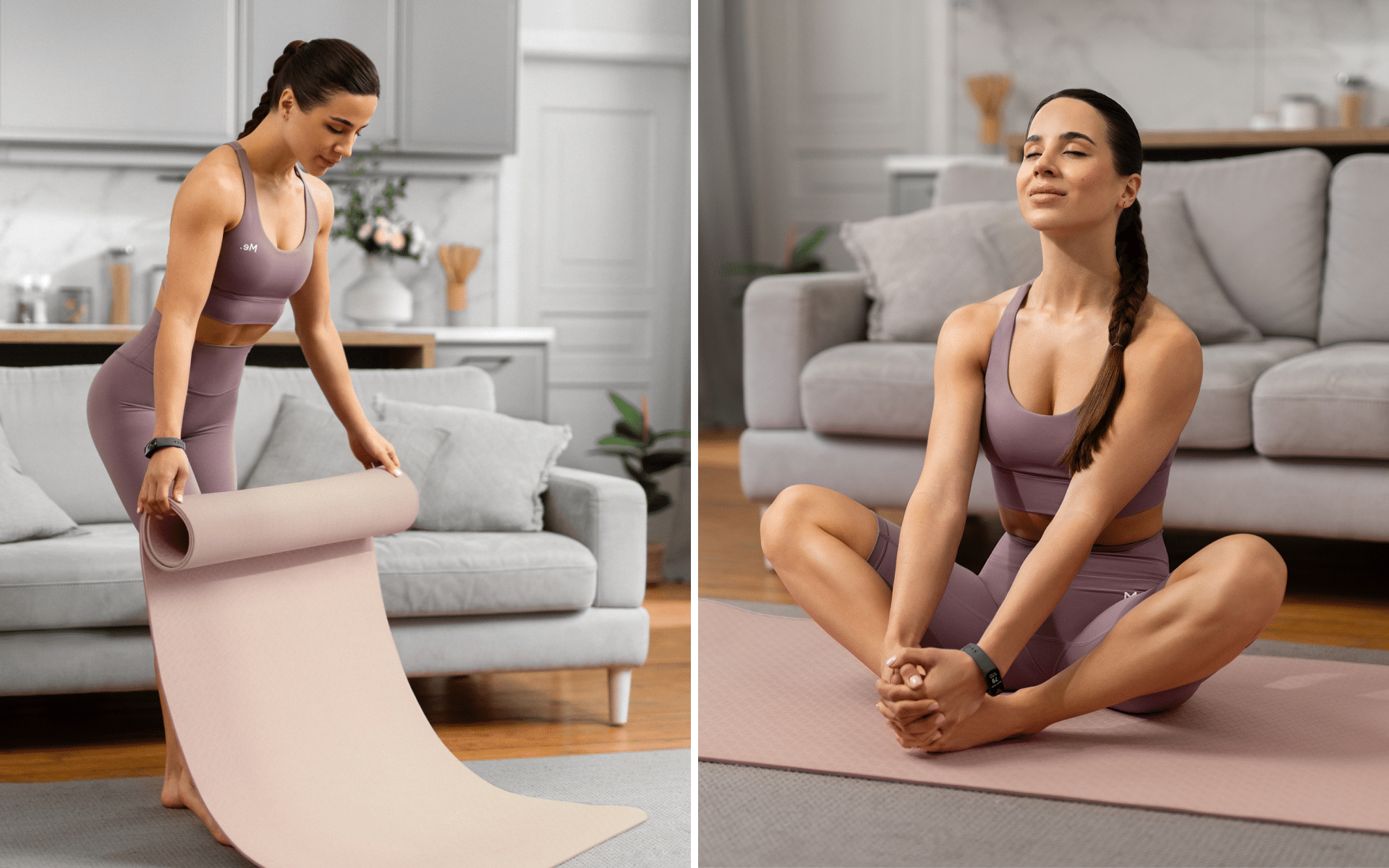
Stability Ball
There are various types of stability balls you can use for your Pilates workouts. A stability ball is essentially a large ball that is inflated and can be used in a variety of exercises to achieve the following benefits:
- Building core strength
- Stabilizing the spine to reduce pain and discomfort
- Improving balance
Stability balls are affordable and widely available. Many people have them at home.
Cadillac or Trapeze Table
When viewed from a distance, the Pilates Cadillac resembles a bed with a rectangular mosquito net stand. The vertical bars, raised frame, and cables are the main features of this table. Its versatility makes it useful for various types of exercises and you can use it to engage in the most challenging Pilates movements. In addition, the Pilates Cadillac is good for people with injuries and helps improve blood circulation, stability, and balance, in addition to enhancing mental health.
This is a large and expensive piece of equipment that is typically only used in studios.
Unbox the BetterMe Pilates Essential Kit and say hello to smart workouts at home or on the go. Slip into the grip socks and stand your ground in style, or loop in some fun with our resistance bands. It’s everything you need to stretch your limits and sculpt your body!
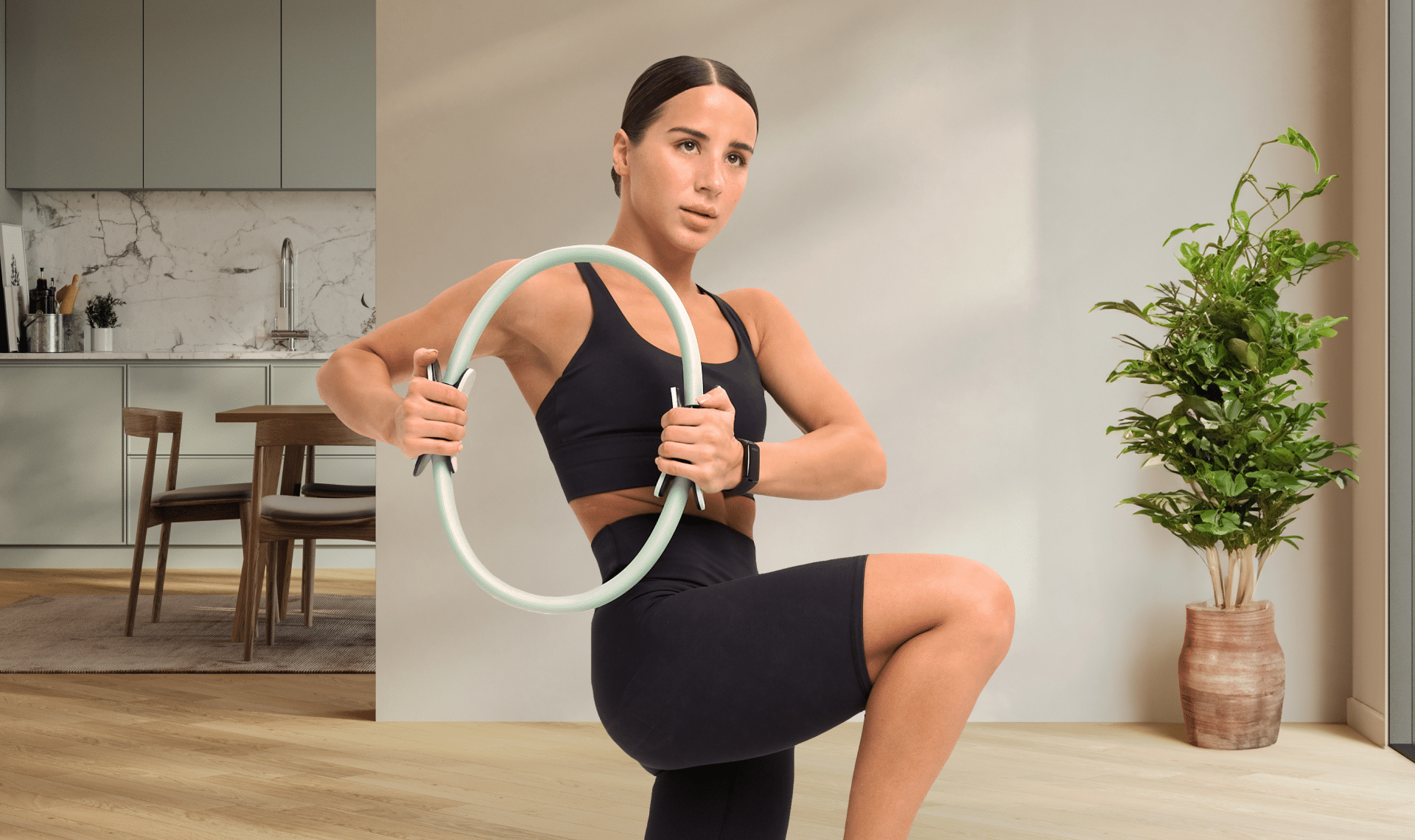
What Do You Need for Beginners Pilates?
As a beginner, you’ll need very little (or no) equipment. It’s typically recommended that you get a basic Pilates mat, but even that is optional. You can perform many exercises without the use of equipment and still see excellent progress.
What Do I Need to Take to A Pilates Class?
You’ll need to take a water bottle and a towel to your Pilates class. You’ll also need comfortable, stretchy clothing and grip socks. If you like minimal, all-in-one outfits, a grip-sock-friendly bodysuit or a one-piece jumpsuit can make getting ready even simpler.
It should be noted that your classes will most likely be done in Pilates studios that have all the equipment you need for your workouts, so you’ll only need to carry small essential things such as clothing and personal effects.
What Does Pilates Require?
Pilates may require equipment, depending on the type of class you’re participating in. But for many, all you need is your body and Pilates-friendly clothing.
Pilates vs Strength Training
“Strength training” is an umbrella term that is used to describe any physical activity with the goal of increasing muscular strength. That being said, Pilates does incorporate strength training into its practice. Pilates differs from what many people think of as traditional strength training as it doesn’t use the same type of training programming and equipment.
Traditional strength training typically uses external resistance in the form of dumbbells, kettlebells, barbells, cables, and machines, while Pilates uses the equipment mentioned above and is a structured mode of exercise with training principles that were developed by its founder and adapted by its practitioners and instructors.
Read more: Pilates Full Body Workout for Beginners (No Equipment Needed)
FAQs
Can Pilates reduce belly fat?
As with any form of exercise, calorie expenditure only helps with weight loss if your caloric expenditure exceeds your caloric intake. Therefore, no amount of exercise can make up for an over-indulgent diet. However, the added calorie output achieved from moderate- to high-intensity exercise improves your intake-to-output ratio and contributes to an improved basal metabolic rate, which leads to increased calorie expenditure throughout the day, not only while you’re exercising.
If you participate in regular moderate- to high-intensity physical activity such as Pilates and focus on a well-balanced, calorie deficit diet, you can experience fat loss. It’s important to remember that you cannot spot-reduce fat. In other words, you can’t specifically target belly fat by doing core exercises (or any other type of exercise). While you can “spot strengthen” to improve the definition of the abdominal musculature, fat loss occurs throughout the body at a relatively even rate (although this depends on genetic factors too).
So yes, Pilates can help reduce belly fat (and all other excess body fat), assuming that you burn more calories than you take in.
How do I prepare for Pilates for the first time?
Preparing for Pilates for the first time requires you to have the necessary tools and equipment, and to focus on the exercises. You need to check on what to wear, what to do, and how to perform the exercises. If you’re attending a class, find out what you need to take with you, while also remembering to take stretchy clothes, a small towel, a water bottle, and other personal things you may see fit.
Is Pilates difficult for beginners?
Pilates can be adapted to any level of experience and those who’ve never participated before shouldn’t be afraid to get started. Whether you opt for the increased guidance of a Pilates instructor in a studio or start at home on your own, you can find options that work for you.
Is Pilates a good way to lose weight?
As mentioned above, Pilates can be an effective component of a weight loss plan, but it can’t make you lose weight on its own. Weight loss requires a number of positive lifestyle factors, including a well-balanced calorie deficit diet, proper sleep, and regular physical activity. Studies have shown that Pilates may help reduce BMI and body weight in overweight and obese adults (5).
Do you wear shoes for a Pilates reformer?
You typically don’t wear shoes while using a Pilates reformer. Grip socks are preferable in this case as you want to achieve flexibility around your ankles and the foot area.
What do you need for Pilates at home?
This totally depends on your preferences. Many Pilates practitioners use no equipment at all, while others like to add some basic equipment such as a mat, Pilates ring, or foam roller. Those with the space and budget often go all out and have their own reformer or trapeze table.
You can see great results with little to no equipment, but the route you take ultimately comes down to your personal preferences.
The Bottom Line
Pilates is an effective and adaptable form of exercise for people of all fitness levels. It can be as elaborate or simple as you want it to be, and that includes the equipment used. Whether you prefer to take classes in a Pilates studio or practice at home, you can experience its many benefits.
DISCLAIMER:
This article is intended for general informational purposes only and does not serve to address individual circumstances. It is not a substitute for professional advice or help and should not be relied on for making any kind of decision-making. Any action taken as a direct or indirect result of the information in this article is entirely at your own risk and is your sole responsibility.
BetterMe, its content staff, and its medical advisors accept no responsibility for inaccuracies, errors, misstatements, inconsistencies, or omissions and specifically disclaim any liability, loss or risk, personal, professional or otherwise, which may be incurred as a consequence, directly or indirectly, of the use and/or application of any content.
You should always seek the advice of your physician or other qualified health provider with any questions you may have regarding a medical condition or your specific situation. Never disregard professional medical advice or delay seeking it because of BetterMe content. If you suspect or think you may have a medical emergency, call your doctor.
SOURCES
- Effects of A Pilates Exercise Program on Muscle Strength, Postural Control and Body Composition: Results from A Pilot Study in A Group of Post-Menopausal Women (2015, ncbi.nlm.nih.gov).
- Pilates Exercises, Types, And Its Importance: An Overview (2023, Das, Tuhin & Bandyopadhyay, Nita).
- The Origins of Pilates (n.d., pilates.com).
- The Effect of Duration of Foam Rolling on Muscle Recovery (2018, commons.lib.jmu.edu).
- Pilates for Overweight or Obesity: A Meta-Analysis (2021, ncbi.nlm.nih.gov).
